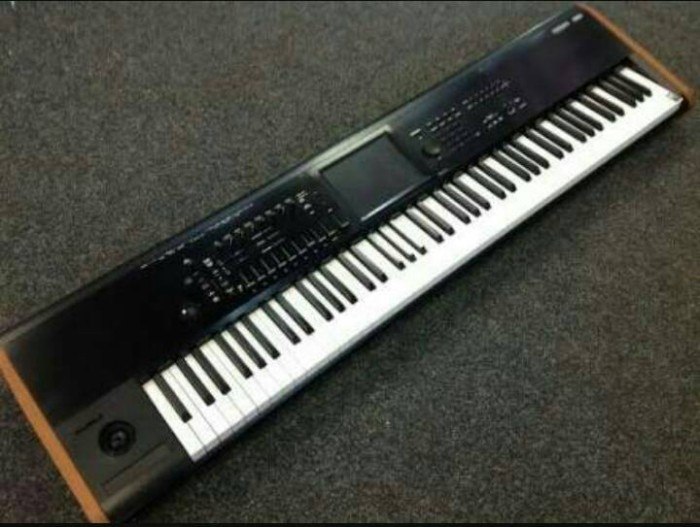


The Kross is capable of generating 80-voices of polyphony with one oscillator (40 with two) on 16 multi-timbral channels. In case it wasn’t clear, we really appreciate Korg’s decision to place all connections on the rear panel. weight (27.3 lbs for the 88-key model), but also by the built-in metal carry handle (see the picture) and the compartment on the bottom of the unit, which can host six AA batteries, providing four to five hours of battery life, depending on the type of batteries used.Įxcept for the mini-jack headphone output on the front left, all connections are on the rear panel, which features nothing extraordinary: three connectors for pedals (sustain with half-damper, continuous, switch), MIDI IN/Out, SD Card connector (supports 2Gb to 32Gb SD/SDHC cards, for programs and audio), USB port (MIDI over USB), line input (in TRS mini-jack format), mic audio input (1/4" TS jack), left and right stereo audio outputs (1/4" TS jacks), and a power supply section (connector for the included external 9V power supply, a power switch and a cable hook, better than a Solaris!). The transportability of the keyboard is not only highlighted by its impressive 9.5 lbs. The mechanism of the “NH” keyboard surely has something to do with it! The 88-key model features the more standard left-of-the-keyboard position for the wheels, which is too bad, because the above-the-keyboard placement would have reduced the total width and made the model even easier to transport.
#How to fix korg m 50 88 mod
It goes to show that the construction doesn’t necessarily have to be compromised, even on entry-level products, thank you!įor the sake of compactness, Korg included conventional mod and pitch wheels, instead of a joystick, which are placed above the keyboard, right above the lowest C# and D#. The construction is all right: the front panel is very rugged, the three big encoders and two knobs are tightly anchored, the buttons are firm, the two wheels (pitch and modulation) are perfectly on axis, and the connections are screwed onto the rear panel. The Kross is entirely made out of plastic (which was expected, given its low price) in two colors: black on top and red on the bottom. We tested the 61-key version, which features a somewhat sticky keyboard that is only velocity sensitive. Kross is available in two models: 61 light keys or 88 weighted keys. Let’s see if it has what it takes to make it a new standard among workstations. We were waiting for a new mid-range product to see the light of day in 2013, but, instead, Kross came along breaking a new price barrier to redefine entry-level. In 2012, Krome redefined the entry-level range for workstations with a huge PCM memory for a hardware device, a powerful sequencer, effects by the dozen and a very good usability, making it an excellent value for money. The product range is right now the subject of an evolution ( OS 2.1), including improved organ modeling.

Korg next released an X version, with a newer motherboard and more memory. In 2011, Kronos marked the history of synthesis with unprecedented power. Today ─ more than ever ─ the Japanese company is the leader in the market, a position that only Yamaha and Kurzweil seem to be able to dispute, since Roland still needs to get back in the saddle. Yet, Korg has been successfully developing a whole range of this type of synth, ever since the M1 came out in 1988.
#How to fix korg m 50 88 software
The workstation market is on the brink of extinction, under the pressure of software tools ─ or at least that’s what you read everywhere.


 0 kommentar(er)
0 kommentar(er)
